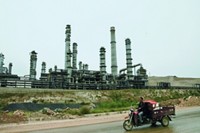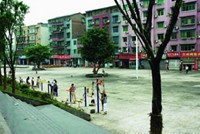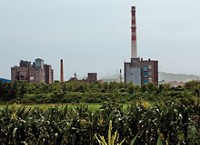Advertisement
Grab your lab coat. Let's get started
Welcome!
Welcome!
Create an account below to get 6 C&EN articles per month, receive newsletters and more - all free.
It seems this is your first time logging in online. Please enter the following information to continue.
As an ACS member you automatically get access to this site. All we need is few more details to create your reading experience.
Not you? Sign in with a different account.
Not you? Sign in with a different account.
ERROR 1
ERROR 1
ERROR 2
ERROR 2
ERROR 2
ERROR 2
ERROR 2
Password and Confirm password must match.
If you have an ACS member number, please enter it here so we can link this account to your membership. (optional)
ERROR 2
ACS values your privacy. By submitting your information, you are gaining access to C&EN and subscribing to our weekly newsletter. We use the information you provide to make your reading experience better, and we will never sell your data to third party members.
Environment
Changes In Nansha
Village Residents Object To Pollution, But Not To Impending Move
by Jean-François Tremblay
January 8, 2007
| A version of this story appeared in
Volume 85, Issue 2

Lonza's site in Nansha, a district in the southern Chinese city of Guangzhou, is tiny compared with the overall industrial presence in the area. In the past, thousands of villagers have had to make way for plants making a broad range of chemicals. A tour of Nansha shows facilities operating or being built under the corporate flags of ExxonMobil, Air Products & Chemicals, Ineos, Sinopec, and others.
In fact, the hamlet near Lonza's site is one of the few places in the area, known as Little Tiger Village, where people still maintain a traditional lifestyle. Among the 50 or so houses there, some are new and others are in disrepair. When C&EN visited in late December, villagers talked freely about the impact the chemical industry was having on their lives.
A 40-year-old fish farmer surnamed Zhang rails against the pollution that the industry has brought since it came to Nansha in 2000. He says the creek next to his house used to be full of fish that were safe to eat. Now, the only fish in the creek are those that swim in from the South China Sea during high tide. He blames the deterioration of the water mainly on a nearby chemical complex owned by a Hong Kong company.
One of Zhang's neighbors adds that, at times, the air pollution is bad enough to irritate the eyes and make them water. He says the air contamination was most terrible about two years earlier. During C&EN's visit, signs of air pollution were not obvious other than smog similar to that encountered in Hong Kong on bad days.
The villagers are surprisingly placid about their upcoming relocation, scheduled to take place this summer. Zhang says he's fine with leaving his house so long as he does not have to pay anything for his new apartment. He adds that he has already sold his farmland, but he is able to use it until Lonza needs it. His family, he says, has lived on the land for about a century.
The new apartment blocks that Zhang and the others will move into are about three miles from their current homes. The buildings have a modern look but appear cheaply built; the sidewalk between the units is already broken in places. The buildings are six floors each and together constitute a small city. There is a school complex across the street.
Zhang acknowledges that the way Nansha government officials are managing the relocation is better than in other parts of China, where arbitrary land seizures are common. But the move will mean the end of a way of life. He says other villagers who have moved into similar apartment buildings have had to give up farming and find work as day laborers.
Read More
- Lonza Grows Roots In South China
- Swiss company is setting up the largest foreign-owned drug ingredients plant in China
- Changes In Nansha
- Village Residents Object To Pollution, But Not To Impending Move





Join the conversation
Contact the reporter
Submit a Letter to the Editor for publication
Engage with us on Twitter